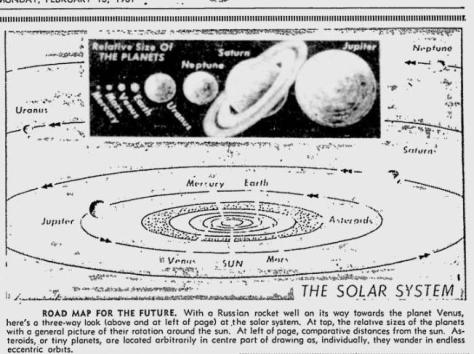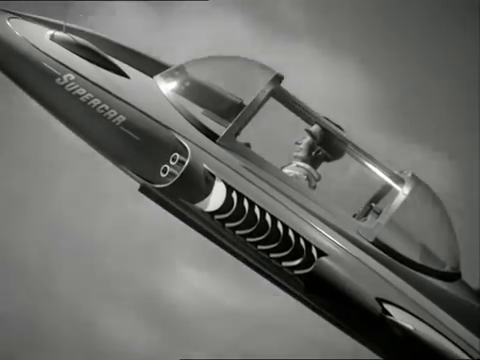I'm starting to enjoy these musical interludes. Indulge me while I flip on my hi-fi to play my new favorite pop tune, Del Shannon's Runaway. Now, don't get me wrong, I'm often still as square as a lot of the slightly older set, and I still tap my toes to Benny Goodman, Glenn Miller, and Count Basie, but I enjoy the new stuff, too.

Now, on to the news. With all of the talk about Mercury capsules on Redstone rockets, it's easy to forget that the main mission is to get a person into orbit–and you just can't do that without a bigger booster.
It appears that bigger booster, in the form of the Atlas ICBM, is ready to roll.
I actually missed the first flight of Mercury Atlas, back on July 29, 1960, as I was traveling Japan and didn't have easy access to English newspapers. In that flight, the Atlas' payload was a boilerplate Mercury. There was also no ejection system or passenger. The goal was to test the Atlas as well as to plunge the Mercury in a steep reentry angle, simulating an abort situation.

Unfortunately, MA-1 broke up 58 seconds after lift-off. It was a cloudy day, so no one saw it occur, but when the telemetry stopped and pieces of the craft fell from the sky, it was pretty clear the mission was over. The culprit was later identified as the junction between the capsule and booster.

MA-2, launched this morning, was a far happier flight. The sky was perfectly clear, and the mission was a complete success. It was a short flight, just 17-and-a-half minutes, and it didn't go any farther than Ham's flight last month, but the results were gratifying, nonetheless. NASA now knows that the Mercury can survive a serious abort situation, and the rocket is ready for an unmanned orbital test. After that, it we'll just be a chimp away from a fellow in orbit; this could happen as soon as the end of the year, I reckon.

Speaking of chimps, here's Ham enduring the rigors of reentry. He had to go through an unplanned 17gs of gravity for a few seconds on the way down, poor thing. He's all right, though, NASA vets assure.

There's a new Discoverer in orbit, Number 21, launched on the 18th. I don't know why the Air Force launched it so fast on the heels of Number 20, which was sent up just the day before. It may be because their missions are so different. #20 is a simple capsule-return mission, differing from prior ones in just the length of the planned mission–four days. #21 will test an in-orbit engine fire, presumably to test its ability to change photographic targets while over the Soviet Union (assuming it's a spy sat, of course!). The latter probe also carries more equipment planned for use on the official spy sat, Midas. It's all a little sketchy; the Air Force is increasingly clamping down on its press releases.
By the way, #20's mission was a bust. The capsule was supposed to come down yesterday, but it's still in orbit. Perhaps it was smitten by #21 and decided it just could bear to be apart…

Meanwhile, the Soviet probe to Venus, Venera, continues to sail along. It is around 4 million kilometers away, and the Russians have confirmed at least three transfers of data. Like Pioneer 5, it will return science on the interstellar medium all the way to Venus. In fact, this may be all we get out of it. Sadly, the probe will miss the mark, ending up perhaps 200,000 kilometers away at closest approach. That may not be near enough to get much useful information, though you never know.
Still no clarification of the February 4 launch, by the way. An article in the Feb. 13 Aviation Weekly advances all kinds of theories, one of which is similar to the "spy sat" explanation my daughter advanced. But in the latest (Feb. 20) issue, it seems the hypothesis I advanced,that Sputnik 7 had the same mission as Sputkin 8 and simply fizzled out, is gaining favor. The twin launches of Sputniks 7 and 8 (the latter being the rocket from which Venera was launched) have apparently galvanized the American government into action. Or, at least, a lot of talking…

Finally, Happy Birthday to me! Like Dr. Asimov, I am a little past 30 (a status I've enjoyed for some time). A fan nominated me for the Hugo this year. I'm flattered beyond words; it's a great present.







